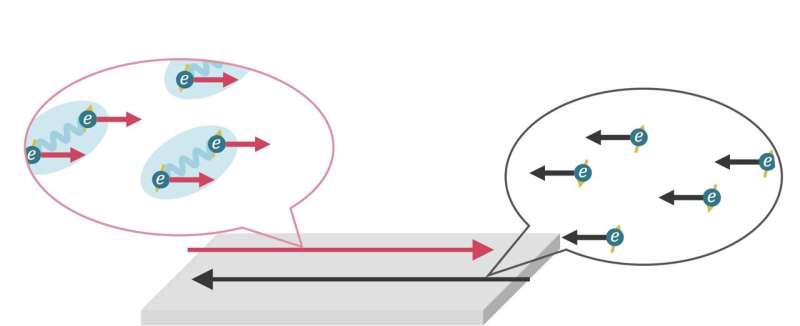Study introduces the intrinsic superconducting diode effect

In 2020, Prof. Teruo Ono and his colleagues at Kyoto University reported the very first observation of a magnetically controllable, superconducting diode effect in an artificial superlattice. Their findings, published in Nature, paved the way for other studies aimed at moving towards the fabrication of non-dissipative electronic circuits.
Working in collaboration with Prof. Ono, another research team at Kyoto University in Japan recently carried out a study aimed at better understanding the mechanisms underlying the interesting effect observed two years ago. Their paper, published in Physical Review Letters, hypothesizes the existence of an intrinsic mechanism that could underpin the superconducting diode effect reported in their previous work.
“Our group works in collaboration with Prof. Ono, whose research group performed the pioneering experiment of the bulk superconducting diode effect,” Akito Daido, one of the researchers who carried out the study, told Phys.org. “The goal of our recent work was to clarify its mechanism, which was unknown before our study.”
The superconducting diode effect is a phenomenon that produces a unique and special type of diode. The characterizing feature of this diode is that, inside it, electric resistance vanishes in one direction and remains finite in the other. This feature is referred to as the ‘nonreciprocity of the critical current.”
“We suggest that a possible mechanism that could cause the superconducting diode effect is the intrinsic superconducting diode effect, where the breaking of Cooper pairs plays an important role,” Daido explained. “Our work builds a foundation of the theoretical understanding of the superconducting diode effect.”
In their paper, Daido and his colleagues clarified the temperature dependence of the nonreciprocal de-pairing current near the critical temperature in superconducting diodes. They also highlight the significant enhancement of this effect at low temperatures and show that the sign of the nonreciprocal critical current can be reversed when greater magnetic fields are applied to a material.
The researchers finally explore the idea that the intrinsic superconducting diode effect underpins the rich phase diagram and functionalities of noncentrosymmetric superconductors. Ultimately, their study could thus improve the physical understanding of some types of superconducting materials.
“Our work revealed that the superconducting diode effect captures a signature of the exotic superconducting phases and can be used as the promising probe for their detection,” Daido said. “This means that the superconducting diode effect is an interesting phenomenon not only from an engineering standpoint, but also from the viewpoint of fundamental physics.”
In the future, the recent paper by Daido and his colleagues could inspire other teams to investigate the intrinsic mechanism they proposed. This could ultimately shed more light on the physical underpinnings of the unique effect observed by Prof. Ono and his colleagues.
In their next studies, the researchers plan to examine the effect proposed in their paper further, to further delineate its physics and dynamics. In addition, they would like to try to identify other mechanisms that could underlie the superconducting diode effect.
Fully-gapped pairing in the new vanadium-based Kagome superconductors
Akito Daido et al, Intrinsic Superconducting Diode Effect, Physical Review Letters (2022). DOI: 10.1103/physrevlett.128.037001
Fuyuki Ando et al, Observation of superconducting diode effect, Nature (2020). DOI: 10.1038/s41586-020-2590-4
© 2022 Science X Network
Citation:
Study introduces the intrinsic superconducting diode effect (2022, February 11)
retrieved 11 February 2022
from https://phys.org/news/2022-02-intrinsic-superconducting-diode-effect.html
This document is subject to copyright. Apart from any fair dealing for the purpose of private study or research, no
part may be reproduced without the written permission. The content is provided for information purposes only.
For all the latest Science News Click Here
For the latest news and updates, follow us on Google News.

